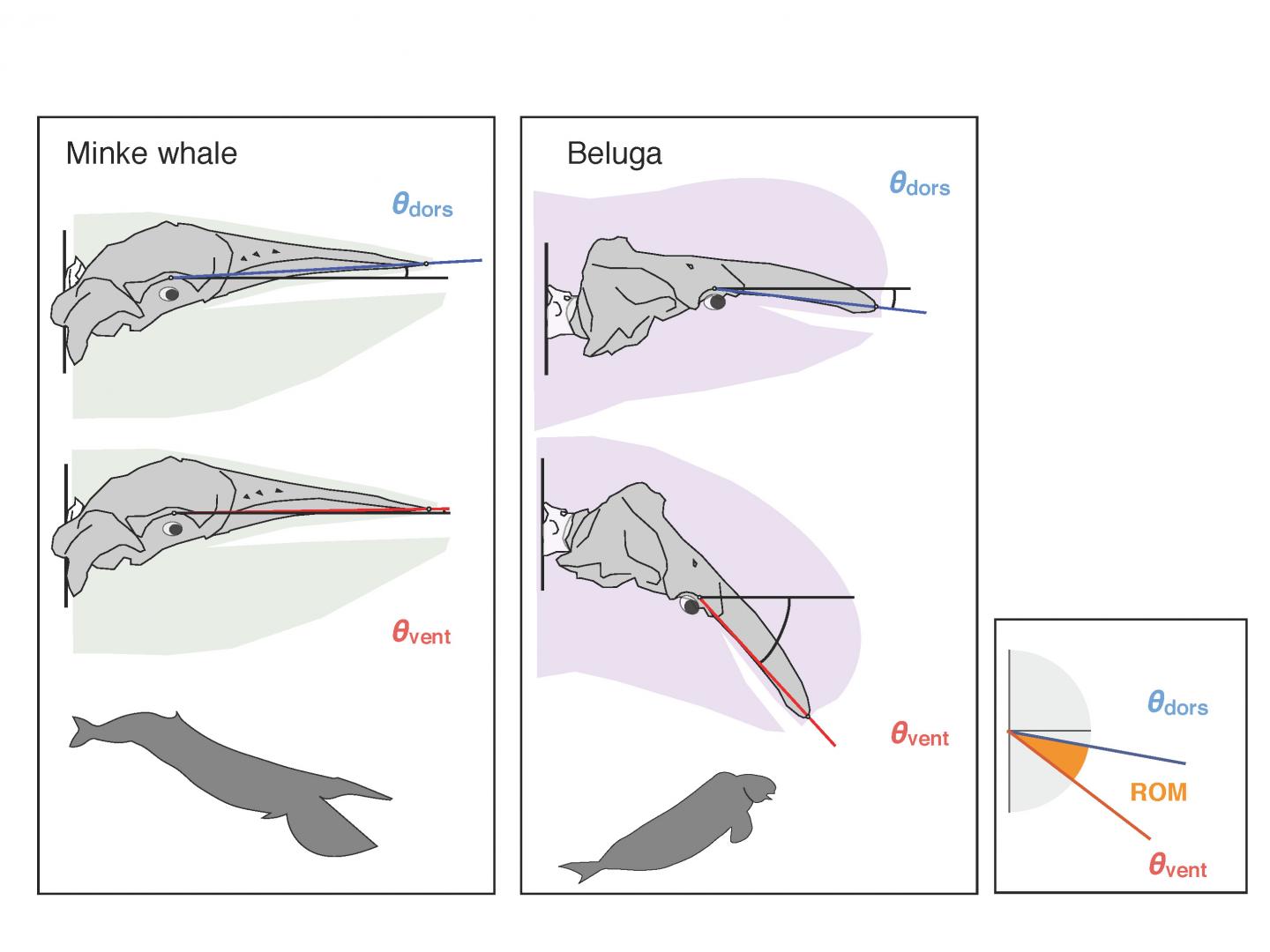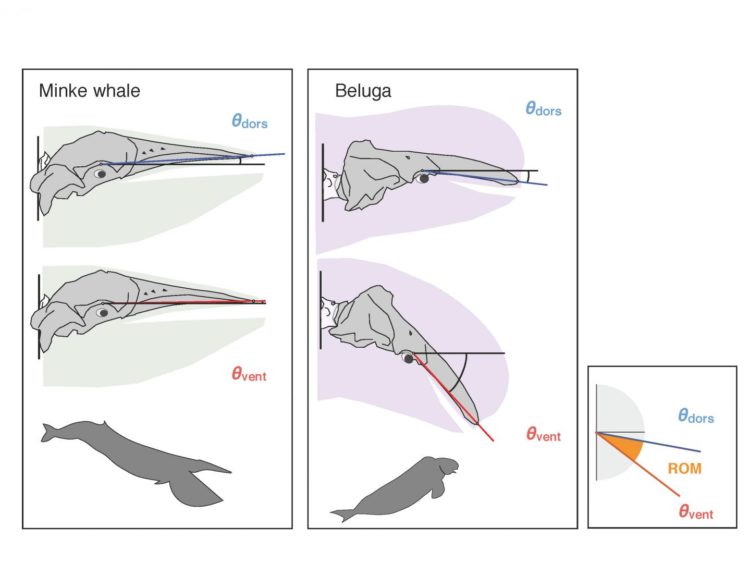
Credit: Taro Okamura
Scientists could soon better investigate the feeding behaviors of extinct dolphin and whale species. A third year student at Japan’s Nagoya University has found that the range of motion offered by the joint between the head and neck in modern-day cetaceans, a group of marine mammals that also includes porpoises, accurately reflects how they feed. The authors of the study, published in the Journal of Anatomy, suggest this method could help overcome current limitations in extrapolating the feeding behaviors of extinct cetaceans.
Taro Okamura of Nagoya University and Shin-ichi Fujiwara of the Nagoya University Museum examined the skulls and cervical skeletons of 56 cetaceans that are still in existence, representing 30 different species. They assessed the range of motion of the ‘atlanto-occipital joint’ in each skeleton, a joint that forms between the base of the skull and the first cervical vertebra. They then categorized each cetacean according to their well-studied feeding behaviors, including how they approach their prey, move it within their oral cavities, and swallow it.
“We found that the range of neck-head flexibility strongly reflects the difference of feeding strategies among whales and dolphins,” says Okamura. “This index can be easily applied to reconstruct the feeding strategies of extinct whales and dolphins,” he adds.
Cetaceans are known for their diverse behaviors, physiologies, ecologies and diets. Some cetaceans feed on organisms in the open water, while others feed on those found near the ocean floor. Some whales are ram feeders, widely opening their mouths to gather zooplankton and other actively swimming organisms into their mouths while moving forward. Other whales, like the sperm whale, suction their prey into their oral cavities. The orca whale and some dolphins bite the fish they catch into smaller segments, a process that may require head movement. Other dolphins swallow their prey whole.
Until now, scientists have used the structures of teeth, throat bones and lower jaws in cetacean fossils to develop an idea of what their feeding behaviors might have looked like. But these individual features can’t accurately predict the behaviors of extinct cetaceans. For example, the teeth of some suction feeders, like those of the sperm whale, aren’t suggestive of this kind of feeding. Okamura and Fujiwara propose that using a combination of features, which include the range of motion of the atlanto-occipital joint, could help to develop more accurate descriptions of extinct cetacean feeding behaviors.
In prehistoric times, many different types of cetaceans existed, including ones with walrus-like tusks, extremely long snouts, and an ancient sperm whale with huge predatory teeth. The ancient baleen whale had teeth, whereas modern-day baleen whales have ‘baleen,’ or fringed plates, in their place. This has created much interest in how baleen whale feeding, for example, has evolved from catching prey with teeth to filtering it with baleen.
The two researchers next plan to determine the atlanto-occipital joint range of motion in some of these cetacean fossils to attempt to develop reconstructions of how they used to feed. Answering these questions could help reveal the evolutionary process of the diverse feeding behaviors among cetaceans.
###
The article, “The range of atlanto-occipital joint motion in cetaceans reflects their feeding behavior,” was published in Journal of Anatomy on November 8, 2019, at DOI: 10.1111/joa.13111.
For more information, contact:
Taro Okamura
Student of the School of Science, Nagoya University
Email: [email protected]
About Nagoya University
Nagoya University has a history of about 150 years, with its roots in a temporary medical school and hospital established in 1871, and was formally instituted as the last Imperial University of Japan in 1939. Although modest in size compared to the largest universities in Japan, Nagoya University has been pursuing excellence since its founding. Six of the 18 Japanese Nobel Prize-winners since 2000 did all or part of their Nobel Prize-winning work at Nagoya University: four in Physics – Toshihide Maskawa and Makoto Kobayashi in 2008, and Isamu Akasaki and Hiroshi Amano in 2014; and two in Chemistry – Ryoji Noyori in 2001 and Osamu Shimomura in 2008. In mathematics, Shigefumi Mori did his Fields Medal-winning work at the University. A number of other important discoveries have also been made at the University, including the Okazaki DNA Fragments by Reiji and Tsuneko Okazaki in the 1960s; and depletion forces by Sho Asakura and Fumio Oosawa in 1954.
Media Contact
Taro Okamura
[email protected]
Original Source
http://en.
Related Journal Article
http://dx.





